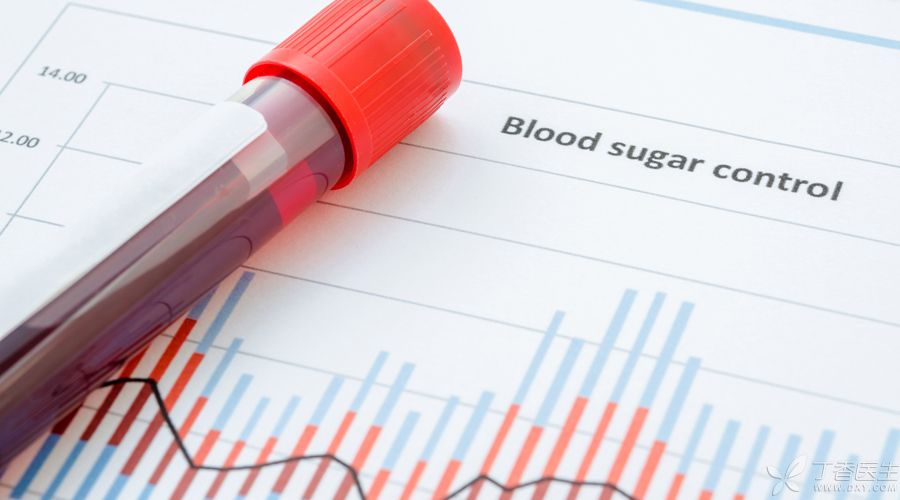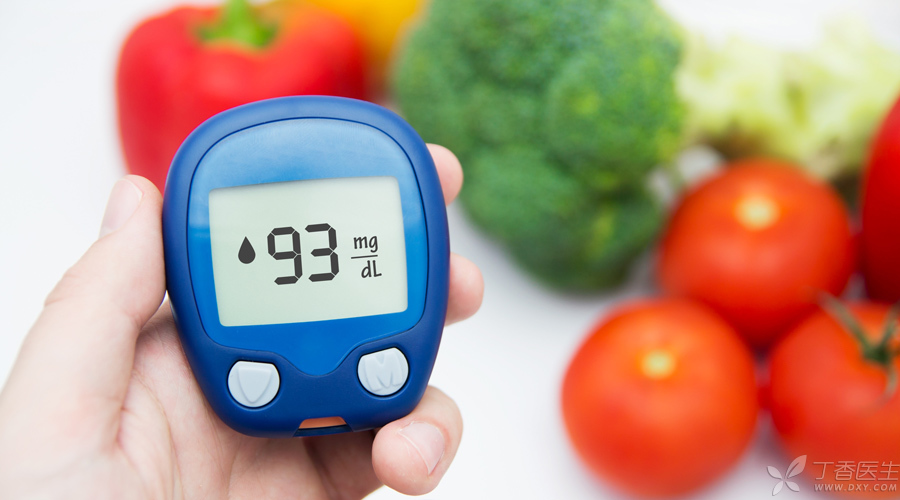
As we all know, diabetes blood sugar control pays attention to a stable word. However, there are still many sugar lovers who have such doubts:
Why does blood sugar control not pursue the lower the better, but pay attention to stability?
Can how be regarded as [blood sugar stable]?
Today, Dr. Clove will talk to you about the stable blood sugar.
Blood sugar control, why do you seek stability but not low?
1. Blood sugar is not required to be low.
Many sugar lovers think that the lower the blood sugar, the better. They are afraid of high blood sugar. They try their best to control their diet and even add drugs without authorization. This is very likely to induce hypoglycemia.
However, hypoglycemia among sugar lovers is very dangerous, which can cause coma, myocardial infarction, stroke, etc. The treatment is not timely and even life-threatening.
2. Pay attention to stable blood sugar
Instable blood sugar may cause a series of complications:
- Vascular damage: Fluctuating blood sugar, More likely to cause vascular damage, Causes atherosclerosis, Causing cardiovascular and cerebrovascular diseases, Causing coronary heart disease, cerebral infarction, etc. Kidney and retinal cell damage: The ups and downs of blood sugar, Causing extensive damage to kidney and retinal cells, Causes the occurrence and development of diabetic nephropathy and diabetic retinopathy. Decrease of islet cell secretion function: Blood sugar rises and falls, and islet cells that can secrete insulin are also exhausted and their secretion function is greatly reduced. Injured nerves: The rapid change of blood sugar may also cause sensory nerve damage, causing numbness of hands and feet, pain and other symptoms, so [diabetic peripheral neuropathy] is coming to you.

Blood sugar control, how is stable?
Our blood sugar is always changing. Blood sugar rises after eating, and gradually decreases with time after eating. The highest point of blood sugar usually occurs 1 hour after breakfast, while the lowest point occurs between 2 and 3 a.m.
Under normal circumstances, the fluctuation range of blood sugar in one day is less than 2 ~ 3 mmol/L, and the average fluctuation range of blood sugar between days is generally within 0.8 mmol/L.
We judge whether blood sugar is stable or not. Generally speaking, we look at two indicators:
- Glycosylated hemoglobin reflects the general trend. Changes in blood sugar within one day reflect peaks and valleys.
Only when these two indicators are well controlled can they be stable.
Glycosylated Hemoglobin: The Trend of Blood Glucose
We often see the abbreviation of HbA1C on the checklist, which is glycosylated hemoglobin.
Glycosylated hemoglobin is the product of the combination of glucose and hemoglobin in blood, which is proportional to the concentration of glucose in blood.
As you can imagine, hemoglobin infiltrates the blood. If the glucose concentration in the blood is very high, then after a period of time, the hemoglobin combined with glucose will also increase. The higher the long-term blood sugar level, the greater the proportion of glycosylated hemoglobin will be.
Monitoring glycosylated hemoglobin can understand the average level of blood sugar in the last 2-3 months, reflecting the general trend of blood sugar. The control level of glycosylated hemoglobin needs to be determined under the guidance of doctors and according to their own conditions. Here, give everyone a reference index:
- In general, It is more appropriate to control glycosylated hemoglobin within 6.5%. In younger patients with type 2 diabetes, Glycosylated hemoglobin can be controlled within 6.0%. Diabetes patients with long-term illness, cardiovascular diseases or elderly diabetes patients over 65 years old can be appropriately relaxed to 7.0% ~ 9.0%, and the specific target needs to be determined by doctors. For patients with type 1 diabetes, on the basis of avoiding hypoglycemia, it can be controlled within 7.5% under the age of 18 and within 7.0% over the age of 18.
Changes in Blood Glucose in One Day: Peak and Valley of Blood Glucose
Although glycosylated hemoglobin can reflect the average level of blood sugar, it is still incomplete.
This is because, if the blood sugar is high and low, the fluctuation is large, on average, the high and low offset, glycosylated hemoglobin can also reach the standard, but such high and low fluctuation of blood sugar can still cause various complications mentioned at the beginning of the article.
There are many complicated clinical formulas to estimate the blood sugar changes in one day. Here, let’s give you a relatively simple and rough goal:
- Within a day, The difference between the highest and lowest blood sugar levels, 3 mmol/L is preferable, If it exceeds 6 mmol/L, the blood sugar will fluctuate greatly. For patients with type 2 diabetes under 60 years old and without obvious complications, it is suggested that fasting blood sugar should be controlled at 4.4 ~ 7.0 mmol/L, and non-fasting blood sugar should be controlled at 4.4 ~ 10.0 mmol/L for patients with type 2 diabetes over 60 years old, with severe hypoglycemia history and obvious complications, or sugar lovers diagnosed with type 1 diabetes, the target range can be appropriately relaxed under the guidance of doctors.
Blood sugar is stable, 3 moves are done.
The main reason for the fluctuation of blood sugar is the sharp increase of blood sugar after meal or hypoglycemia before meal, which leads to the subsequent rebound of blood sugar.
In order to avoid blood sugar fluctuation, it is very important to ensure the stability of blood sugar before meals and 2 hours after meals. In order to achieve this effect, we mainly start from these three aspects:
Step 1: Diet
Diabetes patients’ diet, need to be under the guidance of doctors, according to the height, weight and activity to determine the diet plan. Three meals are regularly and quantitatively. In the selection of types, it is appropriate to choose foods that have less influence on blood sugar, coarse grains, less fine grains and more vegetables in an appropriate amount.
If there is postprandial hyperglycemia and hypoglycemia before the next meal, the meal can be divided under the guidance of a doctor. For example, if there is hyperglycemia after breakfast and hypoglycemia before Chinese meal, one third of the breakfast can be eaten at 10 o’clock in the morning.

2. Campaign
It is best to arrange it one hour after the meal, not on an empty stomach, but moderate intensity exercise, including fast walking, Taijiquan, cycling, table tennis or badminton, etc. Pay attention to prevent the risk of hypoglycemia caused by exercise.
It is best to monitor blood sugar after exercise, such as blood sugar < 5 mmol/L, and eat a little soda biscuits, fruits, etc.
3. Drugs
If the blood sugar fluctuates greatly, you can choose drugs reasonably under the guidance of your doctor. For example:
Drugs that reduce fasting blood glucose fluctuations, such as long-acting insulin (insulin glargine, etc.).
Drugs to reduce postprandial blood sugar fluctuation include acarbose, voglibose, repaglinide, nateglinide, glipizide, siglidine, liglidine, saglidine, etc. Oral drugs include acarbose, voglidine, repaglidine, etc. Injections include insulin aspart, insulin aspart 30, insulin aspart 50, protamine zinc recombinant insulin lispro 25R, protamine zinc recombinant insulin lispro 50R and exenatide.
Among them, acarbose and voglibose can not only reduce postprandial hyperglycemia, but also avoid hypoglycemia before the next meal.
The use of insulin pumps also helps to reduce blood sugar fluctuations.
